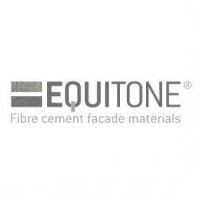-
Australia
Copyright © 2025 Powered by BCI Media Group Pty Ltd
Confirm Submission
Are you sure want to adding all Products to your Library?
Contact Detail

A modular approach creates a rippled façade for the Hong Kong Museum of Art retrofit
Architect: Vivien Fung
EQUITONE [tectiva] has revitalised the Hong Kong Museum of Art with a new façade .
The façade is partof a four-year renovation by Hong Kong’s Architectural Services Department. The large-scale plan is to increase the museum’s exhibition space by 40%, adding 10,000 square metres to accommodate five new galleries.
Using EQUITONE’s through-coloured [tectiva], the new façade incorporates grey fibre cement panels to form a contemporary 3-dimensional design built with prefabricated modules.
The EQUITONE panels are mounted in different orientations, set vertically, splayed and parallel to the concrete construction below, giving the façade a unique, rippled effect. The resulting façade conveys an impression of depth and provides a tangible texture that echoes both Chinese masonry patterns and the waves of the Victoria Harbour, which the Museum overlooks.

3D facade design with minimal waste
According to Bobby O'Neill, EQUITONE'S global Technical Manager overseeing the project following the Architect’s concept, each 3D module was designed to be cut from one panel, resulting in minimal wastage from the offcuts.
Each module consisted of five separate pieces with angled cuts so that when fitted together it resulted in a 3D module. An aluminium frame was made to support the module. This helped make the assembly of the module faster. The frame kept the panels safe during transportation and fixing. The prefabricated modules were then fixed to the reinforced concrete loadbearing structure and staggered in relation to each other. Each module creates shadow joints, which grab attention with their crisp geometric design.
World-class technical support
EQUITONE closely supported the architects and contractors, providing technical knowledge to ensure the stunning and original vision for the Museum was realised.
The modules were made off-site and delivered to the museum, reducing the time taken to fix the façade in a busy public area with high footfall. For ease of maintenance, the EQUITONE [tectiva] panels can also be taken down individually to facilitate any future works.
The façade extension and renovation are part of a wider masterplan to unlock the local area around the Museum. Art Square at Salisbury Garden, opened in 2014 to anticipate the Museum’s renovations, allows large-scale site-specific installations to be featured in the square for the first time ever. Trees and planters have been rearranged to allow outdoor sculptures, whilst the insertion of framed glass facades further eradicates the barrier between indoor and outdoor exhibition spaces.
EQUITONE’s façade redesign aims to create a new experience for current and future visitors, where space expands and compresses through the intersection of light and shadows expressed across the façade.
Bobby O’Neill comments: ‘Working closely with the in-house design team has enabled us to gain better insights into our technical abilities to provide unique solutions for façade design. The combination of robustness and low weight of modular cladding has proven to be ideal to extend the life of the building by giving it a whole new face to the world, whilst retaining its original structure. The Hong Kong Museum of Art is a contemporary testament to the increasing demand of modular construction – the need to refit, refurbish and renovate existing buildings is on the rise, and EQUITONE has vast experience and technical capabilities to provide a solution to this industry need’.





